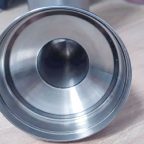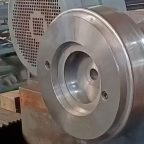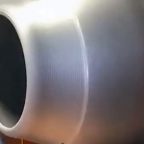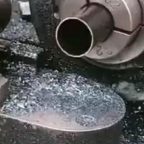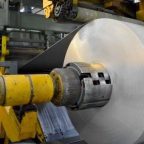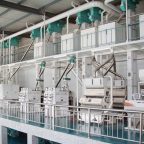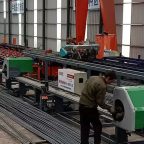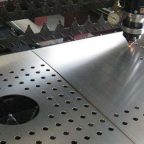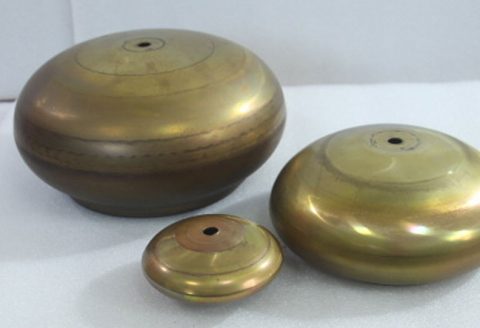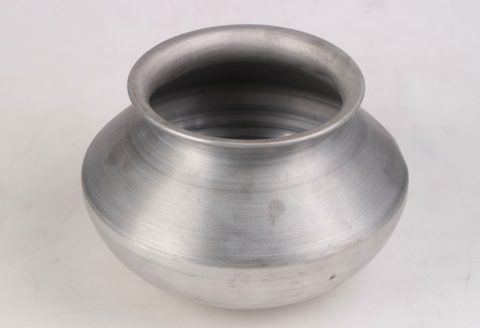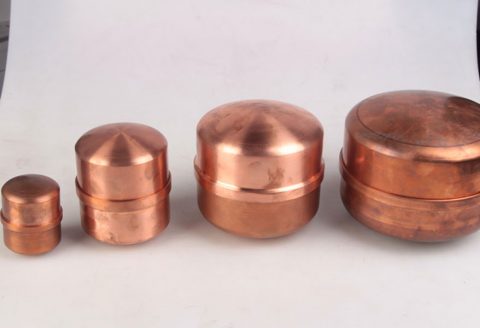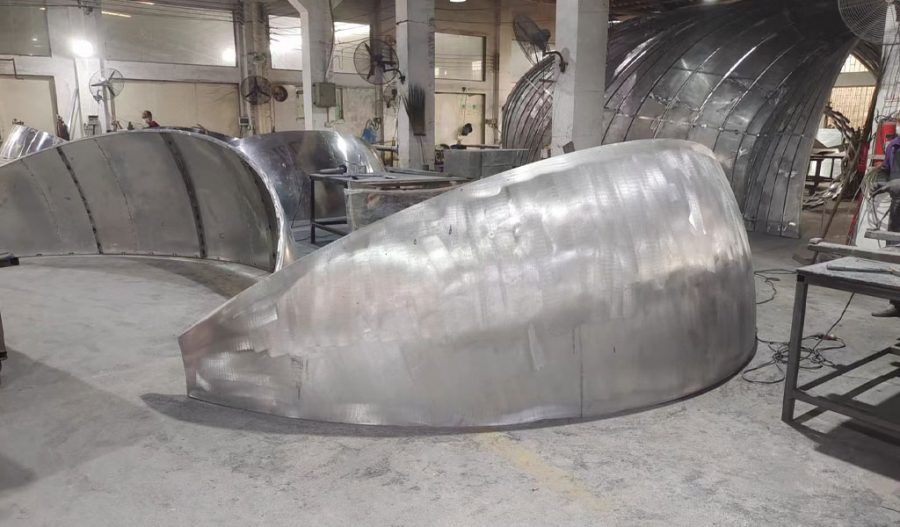
Hot spinning is a versatile metal-forming process that involves the deformation of a rotating metal workpiece, typically a plate or tube, by applying localized pressure with a roller tool against a mandrel or forming die. When applied to superplastic aluminum alloys, hot spinning leverages the unique ability of these materials to exhibit exceptional ductility under specific temperature and strain rate conditions, enabling the fabrication of complex, lightweight components with high precision. Superplastic aluminum alloys, characterized by fine-grained microstructures and high strain rate sensitivity, are particularly suited for industries such as aerospace, automotive, and rail transit, where intricate geometries and lightweight structures are critical. The construction of a key process parameter window for hot spinning of superplastic aluminum alloys is a critical endeavor, as it defines the optimal conditions under which the material can be deformed without defects such as wrinkles, cracks, or excessive thinning. This article comprehensively explores the principles, mechanisms, and methodologies involved in establishing this parameter window, drawing on recent scientific literature and experimental findings to provide a detailed understanding of the process.
Superplasticity refers to the ability of certain polycrystalline materials to undergo extensive tensile elongation—often exceeding 300%—without failure when deformed at elevated temperatures (typically 0.5–0.7 times the melting point) and low strain rates. In aluminum alloys, superplasticity is achieved through fine grain sizes (typically 1–10 µm) and specific alloying additions, such as zirconium or scandium, which stabilize the microstructure against grain growth. Hot spinning, when combined with superplasticity, allows for the production of components with complex geometries, such as cylindrical shells, domes, and corrugated panels, which are otherwise challenging to manufacture using conventional forming techniques. However, the success of hot spinning depends on precise control of process parameters, including temperature, strain rate, feed rate, roller geometry, and number of passes. Deviations from optimal conditions can lead to defects, compromising the structural integrity and performance of the formed parts.
The construction of a key process parameter window involves identifying the ranges of these parameters that maximize formability while minimizing defects. This process requires a multidisciplinary approach, combining materials science, mechanical engineering, and numerical modeling to understand the interplay between material properties, deformation mechanisms, and process conditions. This article is structured to provide a systematic exploration of these factors, beginning with the fundamentals of superplasticity in aluminum alloys, followed by the mechanics of hot spinning, the influence of key process parameters, and the methodologies for constructing the parameter window. Detailed comparisons of experimental and numerical results are presented in tables to facilitate a clear understanding of the optimal conditions for hot spinning of superplastic aluminum alloys.
Fundamentals of Superplasticity in Aluminum Alloys
Definition and Characteristics of Superplasticity
Superplasticity is a phenomenon observed in certain polycrystalline materials that allows for extraordinary tensile elongation under specific conditions. For aluminum alloys, superplasticity typically occurs at temperatures between 0.5 and 0.7 times the melting point (Tm) and at strain rates ranging from 10⁻⁴ to 10⁻² s⁻¹. The hallmark of superplastic deformation is the ability to achieve elongations exceeding 300%, with some alloys, such as AA7075 and Al-Cu-Li alloys, demonstrating elongations up to 1000% or more under optimal conditions. This exceptional ductility is attributed to the fine-grained microstructure (grain sizes typically 1–10 µm) and high strain rate sensitivity (m), which is a measure of the material’s resistance to necking during deformation. The strain rate sensitivity coefficient, m, is defined by the relationship:
[ \sigma = K \dot{\epsilon}^m ]
where (\sigma) is the flow stress, (\dot{\epsilon}) is the strain rate, (K) is a material constant, and (m) is the strain rate sensitivity, typically ranging from 0.3 to 0.8 for superplastic aluminum alloys. High values of (m) indicate that the material can sustain large deformations without localized necking, a critical factor in hot spinning.
Superplasticity in aluminum alloys is governed by three primary mechanisms: grain boundary sliding (GBS), diffusion creep, and dislocation creep. GBS is the dominant mechanism, accounting for the majority of superplastic deformation, particularly at low strain rates. During GBS, grains slide past one another along their boundaries, accommodated by diffusion or dislocation motion to prevent cavitation or void formation. Diffusion creep involves the transport of material along grain boundaries or within grains, while dislocation creep dominates at higher strain rates or lower temperatures. The activation energy ((Q)) for superplastic deformation provides insight into the dominant mechanism. For aluminum alloys, (Q) values are typically 82 kJ/mol for dislocation pipe diffusion, 84 kJ/mol for GBS, and 142 kJ/mol for lattice self-diffusion.
Alloy Composition and Microstructure
Superplastic aluminum alloys are typically designed with specific alloying elements to achieve and maintain fine grain sizes during high-temperature deformation. Common alloy series include Al-Mg (5xxx), Al-Zn-Mg (7xxx), Al-Li, and Al-Cu-Li alloys, as well as aluminum matrix composites. The addition of elements such as zirconium (Zr), scandium (Sc), or manganese (Mn) forms fine dispersoids (e.g., Al₃Zr, Al₃(Sc,Zr)) that pin grain boundaries, inhibiting grain growth via the Zener pinning effect. For example, the SUPRAL alloy (Al-6%Cu-0.5%Zr) developed in the 1960s demonstrated superplastic elongations approaching 2000% due to its fine, stable grain structure.
The microstructure of superplastic aluminum alloys is characterized by equiaxed grains with sizes typically below 10 µm. Achieving this microstructure often requires thermomechanical processing (TMP), such as rolling, equal-channel angular pressing (ECAP), or friction stir processing (FSP). These techniques refine the grain structure and enhance superplasticity by increasing the fraction of high-angle grain boundaries, which facilitate GBS. For instance, FSP of AA7075 alloy has been shown to produce grain sizes of 0.1–18 µm, enabling high-strain-rate superplasticity at 490 °C with elongations exceeding 1000%.
Role of Temperature and Strain Rate
Temperature and strain rate are critical parameters in superplastic deformation, as they directly influence the dominant deformation mechanism and the material’s flow behavior. Superplasticity is typically observed at temperatures between 400–550 °C for aluminum alloys, corresponding to 0.5–0.7 Tm. At these temperatures, thermal activation reduces the flow stress and enhances GBS. However, excessively high temperatures can lead to grain growth, reducing superplasticity, while temperatures below the optimal range increase flow stress and promote dislocation creep, leading to premature failure.
Strain rate sensitivity ((m)) is highly dependent on the applied strain rate. At low strain rates (10⁻⁴ to 10⁻³ s⁻¹), GBS dominates, resulting in high ductility. At higher strain rates (10⁻² to 1 s⁻¹), dislocation creep becomes more prominent, reducing elongation and increasing the risk of defects. Recent studies have explored high-strain-rate superplasticity (HSR SP) to reduce forming times for industrial applications. For example, ECAP-processed Al-Mg-Li-Zr alloys have demonstrated HSR SP at strain rates of 10⁻¹ to 1 s⁻¹, enabling forming times of a few seconds, suitable for automotive applications.
Mechanics of Hot Spinning
Overview of Hot Spinning Process
Hot spinning is a continuous, localized deformation process in which a rotating metal workpiece is pressed against a roller tool to conform to the shape of a mandrel or die. Unlike conventional spinning, which is typically performed at room temperature, hot spinning is conducted at elevated temperatures to enhance material ductility and reduce forming loads. For superplastic aluminum alloys, hot spinning is particularly advantageous due to the material’s ability to undergo large deformations without failure. The process is widely used to produce axisymmetric components, such as cylindrical shells, domes, and tubes, for applications in aerospace, automotive, and rail transit industries.
The hot spinning process involves several key components: the workpiece (typically a tube or plate), a mandrel or forming die, a roller tool, and a heating system to maintain the desired temperature. The workpiece is rotated at a controlled speed, and the roller applies localized pressure to deform the material incrementally. The process can be divided into two main types: shear spinning, where the wall thickness is reduced, and flow forming, where the material is elongated without significant thickness reduction. Shear spinning is particularly relevant for superplastic aluminum alloys, as it allows for the elimination of casting defects and the production of thin-walled components with uniform thickness.
Deformation Mechanisms in Hot Spinning
The deformation mechanisms in hot spinning of superplastic aluminum alloys are similar to those in uniaxial tensile superplasticity, with GBS being the dominant mechanism under optimal conditions. The localized nature of the deformation, however, introduces additional complexities, such as shear stresses and non-uniform strain distributions. During hot spinning, the roller induces compressive and shear stresses in the contact zone, causing the material to flow and conform to the mandrel. The fine-grained microstructure of superplastic alloys facilitates GBS, allowing the material to accommodate these stresses without cracking.
The presence of a mandrel or die introduces frictional effects that influence material flow and thickness distribution. High friction can lead to uneven deformation and surface defects, while low friction may result in insufficient material flow, causing wrinkles or incomplete forming. The roller geometry, including its tip radius and angle, also plays a critical role in controlling the deformation zone and minimizing defects. For instance, increasing the roller tip radius has been shown to reduce surface cracks in hot shear spinning of cast aluminum alloys by distributing the deformation more uniformly.
Advantages and Challenges
Hot spinning of superplastic aluminum alloys offers several advantages over conventional forming techniques. The process allows for the production of complex, lightweight components with high dimensional accuracy and minimal material waste. The low forming loads associated with superplastic deformation reduce the need for heavy equipment, making the process cost-effective for small to medium production runs. Additionally, hot spinning can eliminate casting defects, such as dendrites and shrinkage cavities, improving the mechanical properties of the final component.
However, several challenges must be addressed to achieve successful hot spinning. The narrow range of temperatures and strain rates required for superplasticity limits the process window, requiring precise control of processing conditions. Deviations from optimal parameters can lead to defects, such as wrinkles, cracks, or excessive thinning. Cavitation, a common issue in superplastic deformation, can also occur during hot spinning, reducing the fatigue performance of the formed parts. Furthermore, the high temperatures involved necessitate advanced heating systems and thermally stable tooling materials to prevent degradation.
Key Process Parameters in Hot Spinning
Temperature
Temperature is the most critical parameter in hot spinning of superplastic aluminum alloys, as it directly affects the material’s flow stress, strain rate sensitivity, and deformation mechanisms. For most aluminum alloys, the optimal temperature range for superplasticity is 400–550 °C, depending on the alloy composition and microstructure. For example, AA5083 exhibits superplastic behavior at temperatures above 400 °C, with optimal elongations achieved at 480–525 °C. Higher temperatures reduce the flow stress and enhance GBS, but excessive temperatures can lead to grain growth, reducing superplasticity and increasing the risk of local overburning or brittle fracture.
The temperature distribution across the workpiece is also critical, as non-uniform heating can lead to inconsistent deformation. In non-isothermal hot spinning, a thermal gradient may be intentionally applied to control material flow, as demonstrated in the hot deep drawing of AA5083, where a gradient between the blank center and flange region improved drawability. Finite element simulations are often used to optimize the temperature distribution and identify the safe processing window.
Strain Rate
Strain rate is another critical parameter, as superplasticity is highly sensitive to the rate of deformation. The optimal strain rate range for superplastic aluminum alloys is typically 10⁻⁴ to 10⁻² s⁻¹, although HSR SP has been achieved at strain rates up to 1 s⁻¹ in specially processed alloys. In hot spinning, the strain rate is influenced by the roller feed rate and spindle speed. Low strain rates promote GBS and high ductility, while high strain rates increase flow stress and may lead to dislocation creep, resulting in defects such as cracks or uneven thickness.
The relationship between flow stress and strain rate is described by the constitutive equation:
[ \sigma = K \dot{\epsilon}^m ]
where the strain rate sensitivity (m) determines the material’s ability to resist necking. For example, Ma et al. reported that FSP-processed AA7075 exhibited high-strain-rate superplasticity at 1 × 10⁻² s⁻¹ and 490 °C, with elongations exceeding 1000%. In hot spinning, controlling the feed rate of the roller is critical to maintaining the strain rate within the superplastic range.
Feed Rate and Spindle Speed
The feed rate of the roller and the spindle speed of the workpiece determine the rate of deformation and the contact time between the roller and the material. A high feed rate increases the strain rate, potentially pushing the deformation out of the superplastic regime, while a low feed rate may result in excessive processing time, increasing the risk of grain growth. Studies on hot shear spinning of cast aluminum alloys have shown that reducing the feed rate minimizes surface cracks by allowing more time for material flow and stress relaxation.
Spindle speed affects the centrifugal forces on the workpiece and the frictional interaction between the roller and the material. High spindle speeds can improve surface finish but may increase the risk of wrinkling due to insufficient material flow. Optimal combinations of feed rate and spindle speed are determined through experimental trials and numerical simulations to balance formability and productivity.
Roller Geometry
The geometry of the roller, including its tip radius, angle, and material, significantly influences the deformation zone and the quality of the formed part. A larger tip radius distributes the deformation more uniformly, reducing the likelihood of surface cracks, while a smaller tip radius allows for more precise control of localized deformation but may increase stress concentrations. The roller angle affects the direction of the applied force, with steeper angles promoting shear deformation and shallower angles facilitating flow forming.
The material of the roller must withstand the high temperatures and mechanical stresses of hot spinning. Common materials include high-temperature tool steels or ceramics, which provide thermal stability and wear resistance. The frictional properties of the roller surface also play a role, with lower friction coefficients reducing the risk of surface defects but potentially leading to insufficient material flow.
Number of Passes
The number of passes refers to the number of times the roller traverses the workpiece to achieve the desired shape and thickness. Multiple passes allow for incremental deformation, reducing the risk of defects such as wrinkles or cracks. However, increasing the number of passes also increases processing time and may lead to grain growth or cavitation in superplastic alloys. Studies on hot spinning of Al-Mg-Si alloys have shown that a higher number of passes results in a smoother inner surface but increases the length of the processed portion and reduces wall thickness.
Friction Coefficient
The friction coefficient between the roller, workpiece, and mandrel affects material flow and thickness distribution. High friction can cause sticking, leading to uneven deformation and surface defects, while low friction may result in slippage, reducing the efficiency of material flow. Finite element simulations of hot spinning have shown that optimizing the friction coefficient, typically through the use of lubricants or surface treatments, can reduce thinning and improve formability.
Methodologies for Constructing the Process Parameter Window
Experimental Approaches
The construction of a key process parameter window for hot spinning of superplastic aluminum alloys relies heavily on experimental testing to identify the optimal ranges of temperature, strain rate, feed rate, spindle speed, roller geometry, and number of passes. Uniaxial tensile tests are commonly used to characterize the superplastic behavior of the alloy, providing data on flow stress, strain rate sensitivity, and elongation under various conditions. For example, tensile tests of AA5083 at 480–525 °C and strain rates of 10⁻³ to 10⁻¹ s⁻¹ have shown elongations up to 915%, defining the superplastic regime for this alloy.
Hot spinning experiments are conducted using specialized equipment, such as a CNC spinning lathe equipped with a heating system to maintain the desired temperature. The workpiece is typically preheated to the target temperature, and the roller is advanced at a controlled feed rate to deform the material. The effects of process parameters on surface texture, wall thickness, and defect formation are evaluated through post-processing analysis, including optical microscopy, electron backscatter diffraction (EBSD), and scanning electron microscopy (SEM). These techniques provide insights into microstructural changes, such as grain size evolution and cavitation, which influence the mechanical properties of the formed part.
Numerical Modeling
Numerical modeling, particularly finite element analysis (FEA), is a powerful tool for constructing the process parameter window. FEA allows for the simulation of complex deformation processes, enabling researchers to predict material flow, thickness distribution, and defect formation under various conditions. Software such as Abaqus, ANSYS, and LS-DYNA is commonly used to model hot spinning, incorporating constitutive models that describe the superplastic behavior of the alloy.
Constitutive models, such as the Arrhenius-type hyperbolic-sine equation, are used to correlate flow stress with temperature, strain rate, and strain. For example, the constitutive equation for AA5083 can be expressed as:
[ \dot{\epsilon} = A \sinh(\alpha \sigma)^n \exp\left(-\frac{Q}{RT}\right) ]
where (A), (\alpha), and (n) are material constants, (Q) is the activation energy, (R) is the gas constant, and (T) is the absolute temperature. This model has been shown to accurately predict the flow stress of superplastic aluminum alloys under hot spinning conditions.
FEA simulations also account for frictional effects, roller geometry, and thermal gradients, providing a comprehensive understanding of the process. For instance, simulations of hot spinning of AA5083 have demonstrated that adjusting the friction coefficient and roller tip radius can reduce thinning rates and improve thickness uniformity. The results of these simulations are validated against experimental data to ensure accuracy.
Processing Maps
Processing maps are a valuable tool for defining the safe processing window for hot spinning. These maps are constructed based on the dynamic material model (DMM), which correlates the power dissipation efficiency ((\eta)) with temperature and strain rate. The efficiency of power dissipation is defined as:
[ \eta = \frac{2m}{m+1} ]
where (m) is the strain rate sensitivity. High values of (\eta) indicate regions of stable deformation, typically associated with superplasticity, while low values indicate instability domains where defects such as cracks or flow localization may occur. Processing maps for Al-Cu-Li alloys, for example, have identified optimal deformation conditions at 400–500 °C and strain rates of 0.01–0.1 s⁻¹, with instability domains at higher temperatures and lower strain rates due to Al₃Zr particle dissolution.
Statistical and Machine Learning Approaches
Recent advancements in machine learning, particularly artificial neural networks (ANNs), have been applied to model the superplastic behavior of aluminum alloys and optimize process parameters. ANNs can predict flow stress and defect formation based on input parameters such as temperature, strain rate, and roller geometry. A comparative study of an Arrhenius-type constitutive model and an ANN for an Al-Mg-Fe-Ni-Zr-Sc alloy showed that the ANN provided good predictability, though the Arrhenius model was more accurate for unmodeled conditions. These approaches complement experimental and numerical methods, enabling rapid identification of the optimal process parameter window.
Case Studies and Experimental Results
Hot Spinning of AA5083
AA5083, an Al-Mg alloy, is one of the most widely studied superplastic aluminum alloys due to its relatively low cost and excellent formability. A study on the hot spinning of AA5083 for rail vehicle side windows investigated the effects of temperature (400–550 °C), strain rate (10⁻³ to 10⁻¹ s⁻¹), and friction coefficient on thickness distribution and defect formation. The results showed that optimal forming occurred at 480 °C and a strain rate of 0.01 s⁻¹, with elongations reaching 915%. Finite element simulations revealed that a low friction coefficient and a larger roller tip radius reduced thinning rates, while multiple passes improved surface texture but increased processing time.
Hot Shear Spinning of Cast Aluminum Alloys
Hot shear spinning of cast Al-Mg-Si (A6063) alloys has been explored for the production of high-pressure hydrogen storage containers. The process was conducted at temperatures of 400–500 °C, with varying feed rates and roller tip radii. The results demonstrated that hot shear spinning eliminated casting defects, such as dendrites and shrinkage cavities, and achieved a uniform wall thickness. A lower feed rate and larger roller tip radius reduced surface cracks, while a higher number of passes improved inner surface smoothness but reduced wall thickness.
High-Strain-Rate Superplasticity in AA7075
FSP-processed AA7075 has shown remarkable high-strain-rate superplasticity, with elongations exceeding 1000% at 490 °C and a strain rate of 1 × 10⁻² s⁻¹. Hot spinning experiments on this alloy demonstrated that precise control of the strain rate through feed rate and spindle speed adjustments was critical to maintaining superplasticity. The use of FEA to optimize roller geometry and friction conditions further improved formability, reducing the risk of cavitation and ensuring uniform thickness distribution.
Comparative Analysis and Parameter Optimization
Table 1: Superplastic Properties of Common Aluminum Alloys
| Alloy | Composition (wt.%) | Optimal Temperature (°C) | Optimal Strain Rate (s⁻¹) | Maximum Elongation (%) | Reference |
|---|---|---|---|---|---|
| AA5083 | Al-4.5Mg-0.5Mn | 480–525 | 0.001–0.01 | 915 | |
| AA7075 | Al-5.6Zn-2.5Mg-1.6Cu | 490 | 0.01 | >1000 | |
| SUPRAL | Al-6Cu-0.5Zr | 470–520 | 0.0005–0.001 | ~2000 hield | |
| Al-Mg-Li-Zr | Al-5.5Mg-2.2Li-0.12Zr | 510–540 | 0.0005–0.001 | 580–915 | |
| AA2195 | Al-Cu-Li | 400–500 | 0.01–0.1 | 400–600 |
Table 2: Effect of Process Parameters on Hot Spinning of AA5083
| Parameter | Range Tested | Optimal Value | Effect on Formability | Reference |
|---|---|---|---|---|
| Temperature (°C) | 400–550 | 480 | Enhances GBS, reduces flow stress | |
| Strain Rate (s⁻¹) | 10⁻³–10⁻¹ | 0.01 | Maximizes elongation, minimizes defects | |
| Feed Rate (mm/min) | 60–378 | 60 | Reduces surface cracks, improves thickness uniformity | |
| Roller Tip Radius (mm) | 2–10 | 8 | Reduces stress concentration, minimizes cracks | |
| Number of Passes | 1–5 | 3 | Improves surface texture, reduces wall thickness | |
| Friction Coefficient | 0.1–0.5 | 0.2 | Optimizes material flow, reduces thinning |
Table 3: Comparison of Numerical Models for Hot Spinning
| Model Type | Software | Input Parameters | Output Predictions | Accuracy | Reference |
|---|---|---|---|---|---|
| Arrhenius-type (ACE) | Abaqus | Temperature, strain rate, strain | Flow stress, thickness distribution | High (R² > 0.95) | |
| Artificial Neural Network (ANN) | Custom | Temperature, strain rate, roller geometry | Flow stress, defect formation | Moderate (R² ≈ 0.90) | |
| Finite Element (FEA) | ANSYS | Temperature, strain rate, friction, roller geometry | Thickness distribution, defect formation | High (validated experimentally) | |
| Processing Map (DMM) | Custom | Temperature, strain rate | Power dissipation efficiency, instability domains | High for identifying safe window |
Challenges and Future Directions
Challenges in Hot Spinning
Despite its advantages, hot spinning of superplastic aluminum alloys faces several challenges. The narrow process window for superplasticity requires precise control of temperature and strain rate, which can be difficult to maintain in large-scale production. Cavitation, a common issue in superplastic deformation, can lead to void formation and reduced fatigue life. The high cost of alloying elements, such as scandium, limits the widespread adoption of certain superplastic alloys. Additionally, the lack of comprehensive models for predicting material behavior under complex stress states in hot spinning necessitates further research.
Future Directions
Future research should focus on developing cost-effective superplastic alloys with enhanced high-strain-rate capabilities to reduce forming times and enable high-volume production. Advances in numerical modeling, such as machine learning-based approaches, can improve the accuracy of process parameter optimization. The integration of real-time monitoring systems, such as infrared thermography and in-situ strain measurement, can enhance process control and reduce defects. Additionally, exploring hybrid processes, such as combining hot spinning with friction stir processing, could further improve formability and mechanical properties.
Conclusion
The construction of a key process parameter window for hot spinning of superplastic aluminum alloys is a complex but critical task that enables the production of high-quality, lightweight components for advanced applications. By optimizing parameters such as temperature, strain rate, feed rate, roller geometry, and number of passes, manufacturers can achieve exceptional formability while minimizing defects. Experimental testing, numerical modeling, and processing maps provide complementary approaches to defining this window, with recent studies demonstrating the effectiveness of AA5083, AA7075, and other alloys under specific conditions. Continued advancements in alloy design, process control, and modeling techniques will further enhance the applicability of hot spinning in industries requiring complex, high-performance components.
Maximize Tooling and CNC Metal Spinning Capabilities.
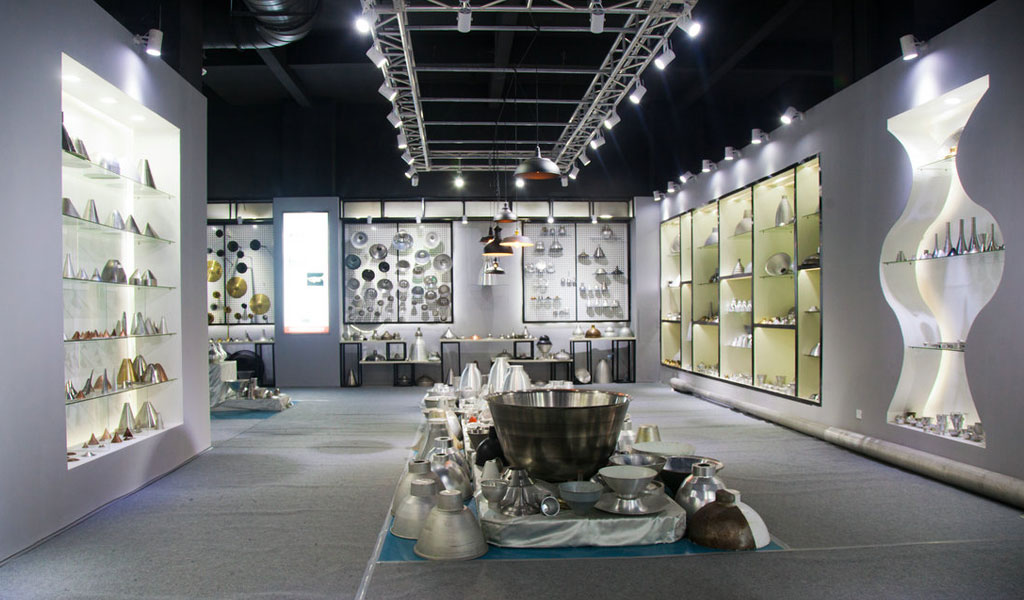
At BE-CU China Metal Spinning company, we make the most of our equipment while monitoring signs of excess wear and stress. In addition, we look into newer, modern equipment and invest in those that can support or increase our manufacturing capabilities. Our team is very mindful of our machines and tools, so we also routinely maintain them to ensure they don’t negatively impact your part’s quality and productivity.
Talk to us today about making a rapid prototype with our CNC metal spinning service. Get a direct quote by chatting with us here or request a free project review.
BE-CU China CNC Metal Spinning service include : CNC Metal Spinning,Metal Spinning Die,Laser Cutting, Tank Heads Spinning,Metal Hemispheres Spinning,Metal Cones Spinning,Metal Dish-Shaped Spinning,Metal Trumpet Spinning,Metal Venturi Spinning,Aluminum Spinning Products,Stainless Steel Spinning Products,Copper Spinning Products,Brass Spinning Products,Steel Spinning Product,Metal Spinnin LED Reflector,Metal Spinning Pressure Vessel,
